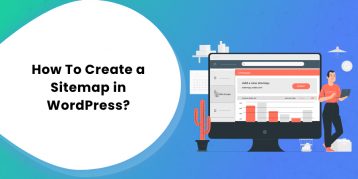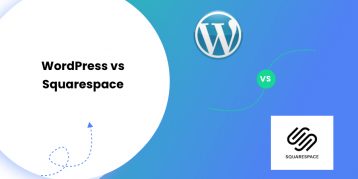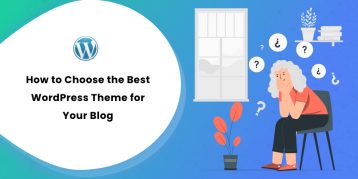Most people don’t know the difference between a blog and a website. They think both of them are the same, with only a variation in their names. Well, it is not a “Potato-Potato” kind of situation. Blogs and websites are two different entities with two different significance and a few similarities.
It doesn’t quite ring the bell, right?
In this article, we will explain the differences between a blog and a website. This ought to solve the blog vs. website riddle in your mind. Also, by the end, we will help you decide which one is better between a blog and a website.
First, we will begin with an overview:
Table of Contents
Blog Vs. Website – Overview
Technically speaking, a blog is a subset of a website. You can relate it to race cars vs. cars. We mean to say, all race cars are a category of cars, but all cars are not sports cars. Makes sense?
Here is an introduction section that will help make it clear:
What is a Website?
A website is a group of web pages that include contents, such as images, videos, texts, or other information. You can access the website by typing its URL on your browser—for example, rarathemes.com or blossomthemes.com.
Note: Information on a website is not as frequently updated as in the blog.
A website consists of a homepage where you enlist all the vital information about your website. From the homepage, you can access other web pages of that site by clicking on the links.
History of Websites
Websites have come a long way and upgraded tremendously since the launch of the first website, CERN, in 1991. The development of ALIWEB (the first search engine) and MTV (the first landing page) marked a milestone for the website’s future.
With JavaScript and Flash’s creation for pop-ups and web animation, people started becoming creative with the websites. Later, Google, PayPal, and WordPress took the website’s craze to a whole another level. Then came Facebook, YouTube, and MySpace.
Finally, websites became as we know them now.
What is a Blog?
A blog is a type (mostly a part) of a website with content about certain topics. The content appears in reverse chronological order, i.e., newer content shows up first. The contents in blogs are also known as blog articles or blog posts.
Generally, an individual or a small group runs blogs. However, with the growth of WordPress and the bigger scope of blogging, there are tons of corporate blogs. Blogs may contain any information such as tips, tutorials, news, listings, collections, and more. As compared to a website, the contents of blogs are frequently updated either by editing the existing ones or creating new ones.
History of Blogs
Online diaries and journals of the mid-90s paved the way for blogs. By that time, people already started running their webpages, where they wrote about their thoughts, personal lives, and social insights.
In 1994, Justin Hall created links.net to release his personal notes. Later in 1997, the term ‘weblog’ came into practice. The term later changed to ‘weblog’ and later to ‘blog,’ which we now know.
Rising blogging opportunities resulted in the creation of Blogger and LiveJournal. The launch of Google Adsense in 2000 and WordPress in 2003 further resulted in the growth of the blogging industry. Since then, many blogging platforms came into existence that would develop blogs to the shape we know today.
Blog vs Website: What’s the Difference?
As already mentioned above, a blog is a type of website or a part of it. The main difference between a blog and a website is that blogs have frequently-updated content. In contrast, a website is more static and divided into pages.
Earlier, people used blogs for personal online journaling. However, after realizing the audience-drawing capability of blogs, business websites started tapping on blogging to improve their sales.
So, keeping it simple, all blogs can be websites, but not all websites are blogs.
Why Should You Write Blogs?
Different people have different motives to write blogs. Be it for journaling, writing news, or promoting brands, blogging is an essential part of an online presence. Moreover, it is also one of the top marketing strategies. Here are some of the benefits of writing blogs:
- Blogging provides you a hub to pour your ideas and thoughts.
- You can showcase your skills, works, and ideas using blogs.
- It helps you socialize online with like-minded people.
- You can use blogs to earn money using various techniques.
- Businesses use blogs to attract more potential customers.
- NGOs can use blogs to run campaigns, raise awareness, and influence public opinion.
Example of a Blog
You will be surprised to know the most popular sites today are blogs. Here is a list of the top five blogs with their number of visitors per month:
- Huffington Post: 110 million visitors per month
- TMZ: 30 million visitors per month
- Business Insider: 25 million visitors per month
- Mashable: 24 million visitors per month
- The Daily Beast: 15.5 million visitors per month
Even other larger web assets such as CNN.com, ESPN.com, and CNBC.com are glorified blogs.
So you see, there are various personal as well as professional reasons to start blogging.
How to Start a Blog
We believe you now know how far a blogging career can go. Now the question is, how do you start a blog?
It takes only six steps to start blogging:
Step 1: Find Your Niche.
The first thing you need for your blog is the topic. Which topic interests you the most? It can be sports, food, travel, health, business, technology, news, or anything else. After figuring out the niche, find out how often do people search for that topic. You can use Google search engine or Google Adwords for it.
Remember that it’s best if your niche is very specific.
Step 2: Set a Domain Name and Web Hosting.
Now that you know which niche you want to blog on, it is time you get a home and its address for your blog. A home is where your blogs reside, i.e., web host, and address is your domain name.
Be careful when choosing a domain name, as it will be your brand. Here are some tips when choosing a domain name:
- Select a name that describes your niche.
- Avoid the use of numbers and symbols. Use a name that is easy to memorize and spell.
- Try keeping your domain name short.
- Select the “.com” suffix for your domain name. It is more popular among web surfers.
- You can use your name if you want your brand to be more personal.
Check out the 10 best domain name generators and 10 best domain name registrars.
For web hosting, there are many options on the market. The popular ones are Bluehost, SiteGround, and DreamHost.
For more details about these hosting providers, here is our review:
For more hosting options, check out the 10 best hosting services
Step 3: Install Your Blogging Platform.
There are two ways you could install a platform for your blogs.
- Write the codes yourself, or hire someone to write them for you.
- Install WordPress.
The first way is more time-consuming, as well as expensive. That is why we recommend installing WordPress.
WordPress is an open-source CMS software that is free to use. Even a novice can get along with WordPress in no time. Plus, there are tons of customization options to suit your needs.
Of course, by saying WordPress, we are pointing at WordPress.org, not WordPress.com. Although these two options may sound similar, they are not. WordPress.org and WordPress.com have different hosting schemes.
If you choose WordPress.com, WordPress manages everything for you, including hosting and domain name. Likewise, in WordPress.org, you need to manage everything. You have the flexibility to choose your hosting server, theme, and every element of your website.
When it comes to blogging, we are sure you need greater flexibility. Although managing everything on your site may sound tiresome, you will enjoy it throughout the setup. That is why we recommend WordPress.org.
Here are the major differences between WordPress.com and WordPress.org.
After installing WordPress, do these 11 important things to make your blogs better.
Step 4: Choose a WordPress Theme.
So you have your niche, your blogging home, and WordPress. Now you need a way to present your blogs on your site. That is where WordPress themes play a role.
There are unlimited premium WordPress themes, as well as free WordPress themes on the internet. You can select a theme that best suits your brand and blog niche.
However, you do need to consider certain features when choosing WordPress themes, such as:
- Performance: A theme with fast loading speed should be your priority. We recommend avoiding a theme bulged-up with multiple features. Such themes increase your site’s loading speed. Select a WordPress theme that has the features you need. Any extras are an unnecessary addition.
- SEO: An SEO-friendly theme helps you get a better rank on search engines.
- Attractive Design: Looks do matter to make an excellent first impression. Your blog should be attractive. So choose a theme that has beautiful layouts and designs.
- Customization Options: The theme you select should give you restriction-free customization options. With time and topic, you may want to adjust the elements of your page. You should be able to change the colors, texts, typography, layouts, and much more.
- Responsive Design with Cross Browser Compatible: You don’t want to miss out on an audience from any platform – mobile phones, tablets, or PC. Also, you don’t want any issue with any web browser. That is why you should select a responsive theme with cross-browser compatibility.
- Plugins Support: Make sure that your theme supports all the major and popular plugins. You can consult the theme developer if you are not sure.
- Social Media Integration: Social media have a great influence on the number of visitors nowadays. Data suggests social media brings in 43% of traffic. If you want to reach more people, your theme needs to integrate social media. Such a feature lets you share your content on social profiles. It also increases your online visibility.
- Support From Developer: If you find any issue with the theme, you can reach out to the developer. They will help you out. Before selecting a theme, make sure that its support team is responsive and prompt.
For more information on what to look for and what to avoid when selecting a WordPress theme, here is our guide on how to choose a WordPress theme. Check it out.
Step 5: Add Necessary Plugins.
Plugins add functionality and features to your existing WordPress theme. Here are some of the recommended plugins for your blogs:
1. Akismet
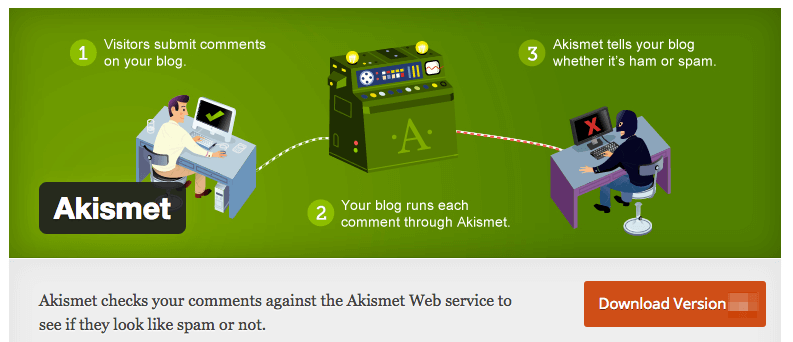
It helps to filter out spam and unwanted comments on your blog posts.
2. Yoast SEO
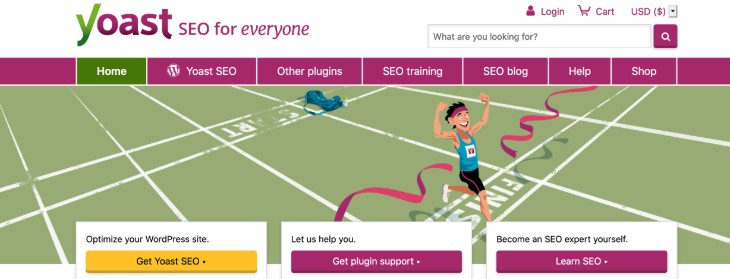
It improves the SEO so that you rank higher on search engines.
3. Google XML Sitemaps
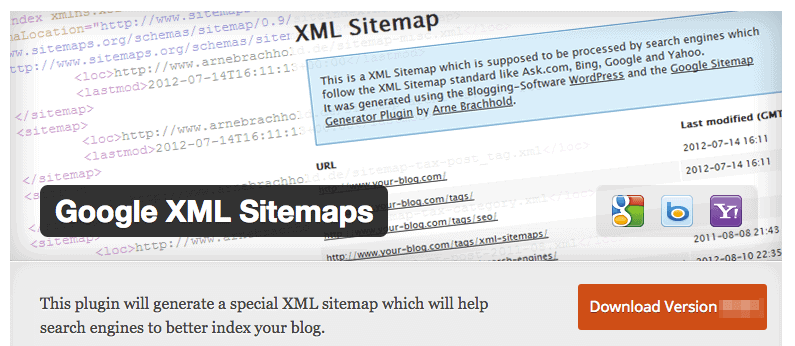
It allows search engines to navigate your blogs.
4. Jetpack

It helps manage your blogs and protect them from unauthorized logins.
5. BackUpWordPress
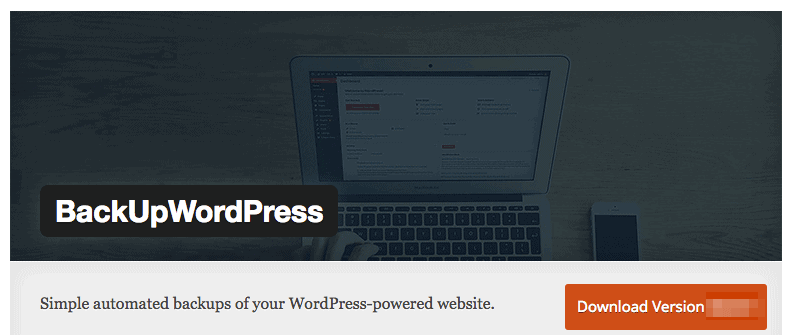
You can create a backup of your blogs. You can even set a date and schedule your backup.
6. W3 Total Cache
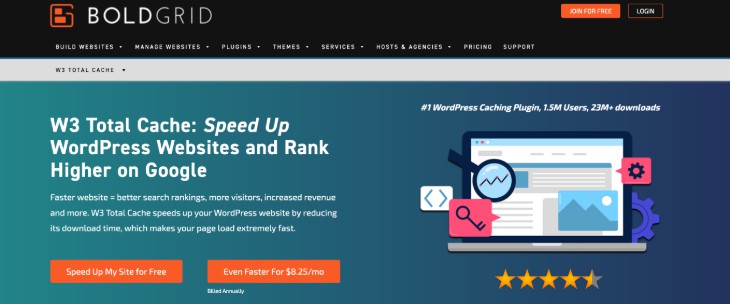
It helps remove repeated and unnecessary caching. Such a feature improves the loading speed of your blog and also saves your hosting bandwidth.
7. Social Media Icons
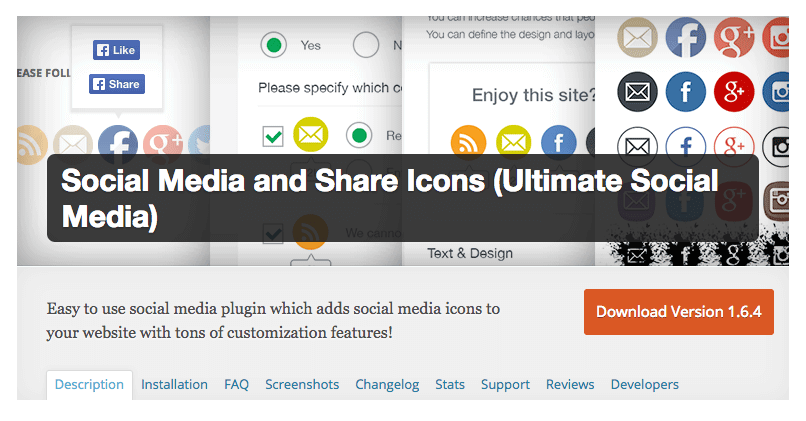
It lets you share your content on social media. Such a feature will help bring more visitors to your blog.
Step 6. Optimize your Blog.
We recommend selecting an SEO-ready WordPress theme for higher rankings on search engines. However, there are few other tricks as well to improve SEO on your blog. Here are 7 On-page SEO techniques that will boost your blog’s rankings efficiently.
So these were the six steps to starting a blog. For detailed information, click on How To Start A WordPress Blog.
How To Make Money From Blogs
Now that you know the scope and benefits of writing blogs, you too may want to earn from it. So how can you make money from blogs?
Well, there are five ways you could do that:
1. Google AdSense Pay Per Click Advertisements
It is the most popular technique for earning money from blogs. AdSense pays you every time a visitor clicks an ad in your blog.
2. Google AdSense for Search
You can also replace the search bar on your blog with Google’s custom search engine. You can place ads in the search results and get paid every time a visitor clicks on it.
3. Sponsored Posts
You can write posts for your paying customers and promote their products or services. Your customers may ask you to write a certain number of articles or place their ads on your blog. Either way, you are getting paid.
4. Affiliate links
Many affiliate marketing websites, such as Amazon and eBay, pay a certain percentage as commission for every product sold through ad promotion on your blog.
5. Selling your products.
Finally, you can sell your products on your blogs. It will be your self-marketing.
To learn in detail, check out these five ways to monetize your blog for free.
How To Start a Website
Running a website is much easier than you might think. From figuring out the blueprints of your site to running a fully functional website, there are only four steps to follow. Here they are:
Step 1: Plan Your Website
You need to figure out what your website is going to be about. Is it going to be humorous, news, or business? Clear out your niche. Then, you need to clearly define your goals and set the target audience. There are billions of online users with many tastes. You need to align the people who closely line up with your niche.
The best way to set your target audience is by figuring out the following points:
- Age and gender: (for example: Women above the age of 20)
- Interests and hobbies: (for example: playing guitar)
- General location: (for example: Northeastern states)
- Personality and attitude: (for example: Humorous)
- Occupation and income: (for example: College student who earns less than $30,000 a year)
Such demographics and psychographics help you narrow out your target audience. Also, with such information, you can tailor your content and products to better suit your target.
Pick a domain name
Now that you have set your niche and target audience, it’s time to pick a domain name. Don’t take this step lightly. A domain name is not only your website’s URL but it represents your brand, who you are, and what you do. So make it count.
There are almost two billion sites on the internet currently. So, picking a name for your website may be a tad difficult.
Picking a domain name does not mean that it always must end in “.com” suffix. There are hundreds of industry and geo-specific domain extensions available today. For example, if you want to start an ecommerce website, you can choose the “.shop’ or “.store” extensions. Likewise, for a beauty salon, the “.beauty” extension suits better.
Here are all the extensions that you can use today. After you find the extension that suits you, you can register your domain name with namecheap.com or name.com. Pricing may vary depending on the extension you choose. Check it out.
The point is that the domain name you choose must:
- Safeguard your brand.
- Express who you are and what you do.
- Grab your visitors’ attention.
Here are some tips to help you choose a perfect domain name:
1. Make it simple: You need to make your domain name as simple and precise as you can. Don’t add unnecessary jargons or showoff with the letters. For example, you don’t want your potential clients to land on a different website because you add a silent “L” to your domain name.
2. Keep it short: A long website name is annoying to read let alone type. So, make sure to keep your domain short.
3. Use keywords: If you can, incorporating the product/service you offer in your domain name is the best practice.
4. Target your area: We recommend using your geo-location on your site to take advantage.
5. Avoid numbers and symbols: Numbers and symbols are not as frequently used as alphabets. So, don’t make users put in effort to find you.
6. Research it: Don’t hold on to the first name you think is catchy. Test it among your family and friends first. If they also feel the same, go for it.
7. Use appropriate extension: Like mentioned earlier, don’t always limit yourself to the “.com” extension. There are various other extension possibilities.
8. Protect your brand: Consider to register your domain name to safeguard your brand.
9. Act fast: After you have found a perfect domain name, don’t wait to register it. Every day, new domains are registered. Don’t wait to get snatched.
Research your design
Now that you have figured out your niche, audience, and domain name, it is time to do some research for your design.
Start by paying attention to following elements of your competitors’ websites:
- The fonts and colors.
- The layout.
- The overall feel of the website.
- The use of images, videos, and other graphics.
- The number of pages.
- The amount of text on each page.
- The ease of navigation.
- The responsiveness.
The overall point of this is educating yourself regarding designs and feels of websites. List out your favorite design elements and move forward with the next step.
Step 2: Design Your Site
You have completed the planning phase for your site. You now know your niche, your domain name, your target audience, and blueprint of your site’s look. It is time to build your site. You have options for this. You can do it yourself or hire a professional.
Let’s talk about your website’s foundation:
Hosting
Here is an easy way to put hosting. Your website is your home, your domain name is your street address, and the hosting plan is the land where you want to build your home. Hosting is arguably the base of your website. Without hosting, there is no moving forward with your website dream.
So, before choosing a hosting plan, consider the following points:
1. Reliability: Your host’s uptime hugely impacts your website’s load time. So pay attention to the company’s guarantees, offers, and compensations.
2. Storage: It depends on the type of site you want to build. For a site that has large media files, you will need more storage on your hosting plan. For a newbie site, any startup plan will be good. Check out the hosting plan and storage of different hosting providers.
3. Bandwidth: Bandwidth goes hand-in-hand with the storage. The larger your website, the more bandwidth you need to transfer your site’s data to the visitors.
4. Scalability: Your hosting company should be able to handle unexpected increases in visitors’ number. The last thing you want is your site to crash because your hosting was not able to handle the traffic.
5. Security: Malware and viruses can alter the data on your site and damage your site’s reputation. So, look for the hosting companies with good security measures on their hosting plans.
6. Backups: Unexpected errors can occur any time. If something goes wrong, your site must always have a backup to restore the changes. Check to see if your hosting company offers website backup.
7. Support: What if your site goes down in the middle of the night? Can you reach out to your hosting provider or do you have to until the next day?
Studies confirm 32.3% bounce rate when page loading time is seven seconds. Bounce rate increases with every more second of delay. So imagine the number of visitors you would lose when your site is down. So, make sure your hosting provider offers 24/7 reliable support.
You can read our reviews on these top hosting providers today:
- Bluehost
- SiteGround
- Dreamhost
For more information, check out 10 best hosting services.
Building Website
We recommend WordPress to build your website. 500+ sites are built on WordPress everyday. Moreover, it is the most popular CMS (Content Management System) that powers 40% of all the websites.
You can easily build your website using WordPress. Take professional help if you are not sure.
Use the best WordPress theme
The Internet is full of free and premium WordPress themes. You can find plenty of themes to go with your needs and niche. However, make sure to look for the following features when choosing a WordPress theme:
Performance
A theme that delivers better performance and loads faster should be your priority. Choose a theme with a minimal design so that it does not bloat your site with unnecessary features.
SEO
A theme with built-in SEO helps to land on higher rank on search engines.
Attractive Design
A theme is great if it has adequate layouts, designs, and templates.
Customization Options
Make sure that your theme has multiple options to adjust your website. The theme should offer full control over any element of the theme, such as layouts, typography, text, colors, animations, and more.
Responsive Design
You may receive visitors from any device and browser. Thus, a responsive theme that is compatible with popular browsers should be your choice.
Plugins Support
Adding plugins increase functionalities on your site. So, choose a theme that is compatible with most of the popular plugins.
WooCommerce Plugin Compatibility
A WooCommerce compatible theme lets you sell products and services on your site.
Social Media Integration
You can share your blogs on various social media platforms and gain more visitors.
For more information, check out How to Choose a WordPress theme?
Designing Tips
After choosing the best theme for your site, pay attention to the following points:
- Use a clean and simple design.
- Choose a color that matches your brand.
- Use high-resolution, quality media files such as images and videos.
- Choose a font that is easy to read.
- Make navigation clear, simple, and easy.
- Add well-crafted content.
- Add a contact page.
- Make sure your website is mobile-friendly.
- Display links to your social profiles.
- Optimize your website for search engines.
Step 3: Add Content
It is time to add relevant content on your site. Whether, you want your visitors to read your blogs, buy your products, sign up to your newsletter, or share from your site over social media, you need to present them with compelling content.
Appropriate content paired with relevant images and videos makes all the difference. To start, all your website needs is these five core pages:
Home: Homepage is your landing page and the first thing your visitors see on your site. So it definitely needs to be a wow-factor. Build content that invites your visitors to explore further on your site and also encourages them to act.
About Us: Tell about your business in a separate About Us page. You can explain how you got started and the people behind the brand.
Products/services: Showcase your products and services on this page. Make sure to add images as well as content.
Testimonials: It’s important to establish a trust-factor among your visitors. The testimonial page is what builds that factor. Use the testimonials page to share your established customer views of your business.
Contact Us: Give your visitors a medium to contact you. You can add your contact number, email, or location.
Step 4: SEO
Now that everything is up and ready, it is time to gain online visibility. An efficient way to do that is using SEO techniques. Here are some basic SEO element you need to understand:
Page content: Relevant content that can answer your audience’s question helps you rank higher in search results.
Keywords: Adding appropriate keywords have a huge impact on SEO. Select phrases that relate to your business, content, niche, or product.
Link building: From backlinks to internal links, linking is important. It provides relevant information to your visitors.
Meta tags: Meta tags contain relevant information to help search engines identify and describe your website in search results.
Site navigation: Make sure all links on your site are up-to-date and that the navigation is simple and easy. The easier and quicker it is for search engines to navigate your site, the higher you climb on search engines.
Site map: A site map is a map of all the pages on your site. It guides search engines through your site.
Read these 7 on-page SEO techniques to double your search traffic.
That’s it. These were the four steps for starting a website.
Conclusion: Which One is Better, Blog Or Website?
As a beginner, it may be confusing whether a blog is better or a website. Well, it depends on your goals.
Many small businesses have websites to list their products and services. Such websites are for creating an online presence. On the other hand, more businesses are including blogs, apart from showcasing their products and services. They use blogs to attract more visitors to their site, which helps increase their sales rate.
For example, rarathemes.com is a WordPress theme website from where you can download free and premium themes. Along with business, the website also means to inform visitors regarding WordPress via blogs.
So, if a blog fills your needs better than a website, go for creating a blog. If the case is the opposite, create a website. It comes down to your choice in the end.
FAQs (Frequently Asked Questions)
1. Should I include blogs on my website?
Blogs are an effective way to increase traffic on your site. Blogs make your site a resource for information. The more you include blogs on your website, the more search engines crawl and index your website. This is great for improving SEO.
So yes, including blogs on your website is a good idea.
2. Is WordPress good for websites or blogs?
WordPress is an open-source content management software. It is the most popular blogging platform. However, WordPress is much more than that. You can use it to build any type of website. It offers greater flexibility as well as unlimited possibilities for setting up a unique and functional website.
3. How do I start a blog for free?
It only takes six steps to start a blog for free.
• Get your topic.
• Get a domain name and web hosting.
• Install WordPress.
• Install a free WordPress theme.
• Add the necessary plugins.
• Optimize your blog.
We have explained these steps in the above section. Go through it to learn more.

